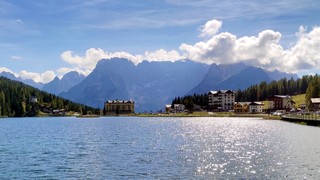Introduction
The history of the Dolomites, from a geological point of view, is very interesting. It allows us to understand the processes that led to the creation of a unique landscape as that of Cortina d'Ampezzo.
It's a phenomenon that began millions of years ago and slowly pushed upwards the ocean floor, until it became one of the most iconic panoramas in the world.
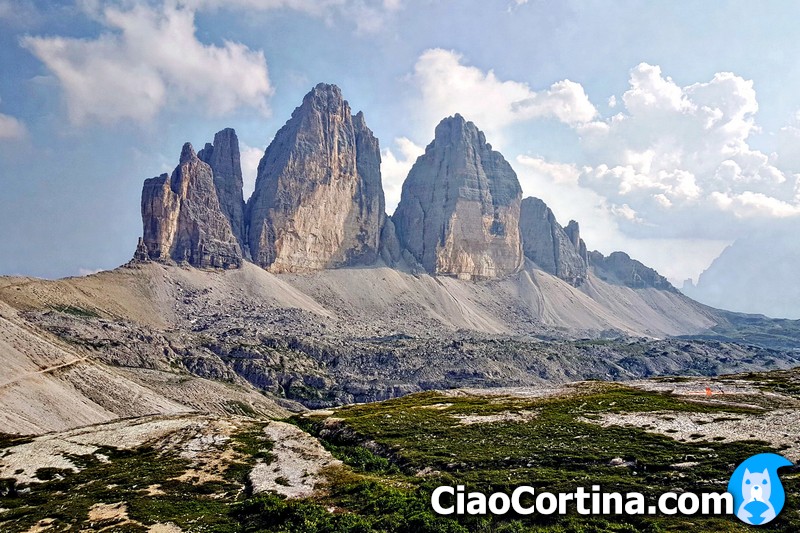
It occurred through complex geological processes, such as lithogenesis, the transformation of sediments into rock, orogenesis, the emergence of these underwater sediments from the sea and morphogenesis, the weathering of these rock walls.
... the history of the Dolomites has been hard to understand for geologists...
What many people don't know is that the history of the Dolomites, and its component rocks, has been extremely hard to understand for geologists.
The process by which the mountains were formed has been known since the 1700s, but only in 1995 scientists were able to reproduce, in the laboratory at room temperature, the conditions necessary for the formation of Dolomite, the rock of which the Dolomites are composed.
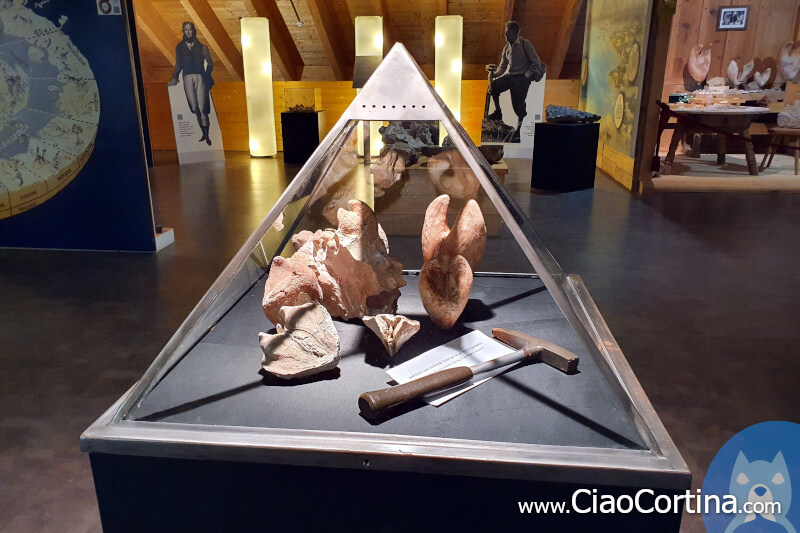
This is a somewhat technical page, but we think it's really interesting, if you are willing to broaden your knowledge of the Cortina area and the Dolomites in their entirety.
On this page we'll narrate the history of the Dolomites in a geological sense, not the recent history of Cortina, if you are interested in the recent history, you can read the following article:
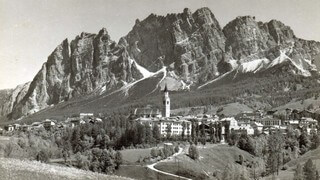
The topics covered in this page are inspired by two informative seminars, presented by prof. Nereo Preto, during the meetings of "Science in a Glass" and which can be viewed, free of charge, on YouTube. There are only two problems: the audio quality could be better and the language is Italian. Probably you wouldn't understand them, even though they are very interesting, that's why there's our article. Anyway, you can find it by clicking here, for the first video, and clicking here, for the second.
Geological time
First, we need to put into perspective what period we will describe. Geological time is used to date a given rock. Obviously this is a much wider timeframe than that used in measuring modern history, since it takes into account periods lasting millions of years.
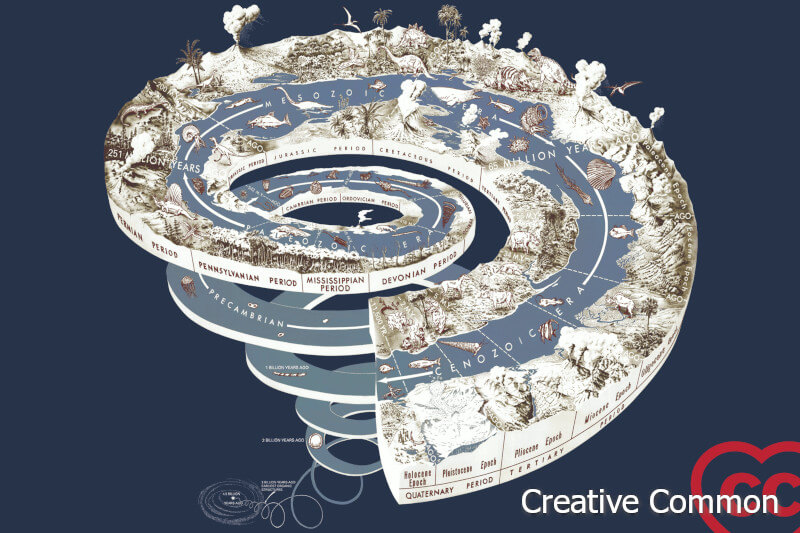
Just to understand how long these periods can be, all of documented human history is about twelve thousand years long, while the first hominids appeared on earth much earlier, about four million years ago. The rock of which Mount Tofane is made, on the other hand, began forming about two hundred million years ago, 50 times before the first hominids began living in caves.
Geological time is divided into periods, such as Jurassic, Silurian or Permian. The whole history of the Dolomites is almost entirely contained into the Triassic period, which is dated between 200 and 250 million years ago. The reason for such a broad dating is because, the Dolomites, are rock formations that were created by stratification, as we'll see in the next chapter.
 Help us stay ad-free with a small offer.Donate now!
Help us stay ad-free with a small offer.Donate now!
The stratification
The dolomites are composed of many strata of sediment, deposited at the bottom of the sea in stratigraphy, one layer on top of the other, a process that took millions of years.
The formation, in layers, of the rocks is a phenomenon that can be seen on almost all the mountains of the Dolomites. The lower stratum is about two hundred and fifty million years, while the highest stratum is about two hundred and twenty million.
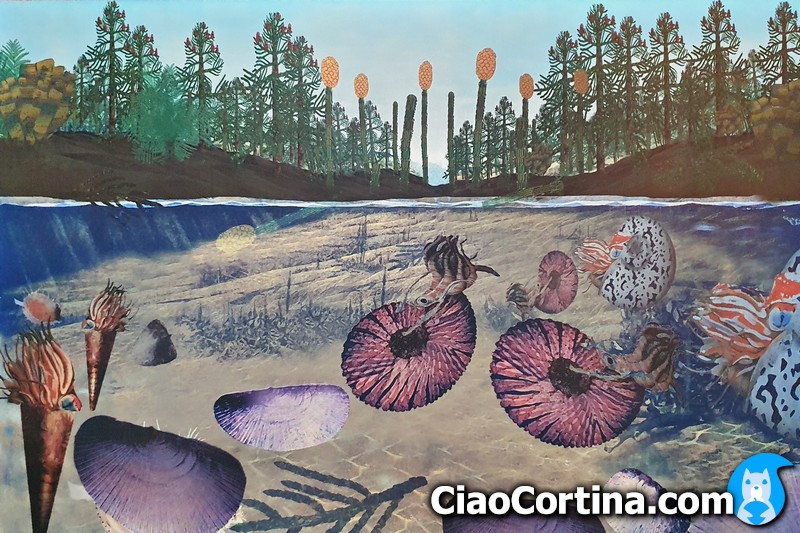
To give some examples: the tip of Lagazuoi can be dated to about 235 million years ago, in the Carnic period, while some of the most characteristic mountains of the Dolomites, such as the Three Peaks of Lavaredo or the Tofane, can be dated around 220 million years ago, in the Noric period.
Peculiarities of the Dolomites
What makes the Dolomites unique in the world, so much so as to make them a UNESCO World Heritage Site in 2009, is undoubtedly their color and shape.
The color is uncommon, because the Dolomites are light, as opposed to most other mountains, which are dark.
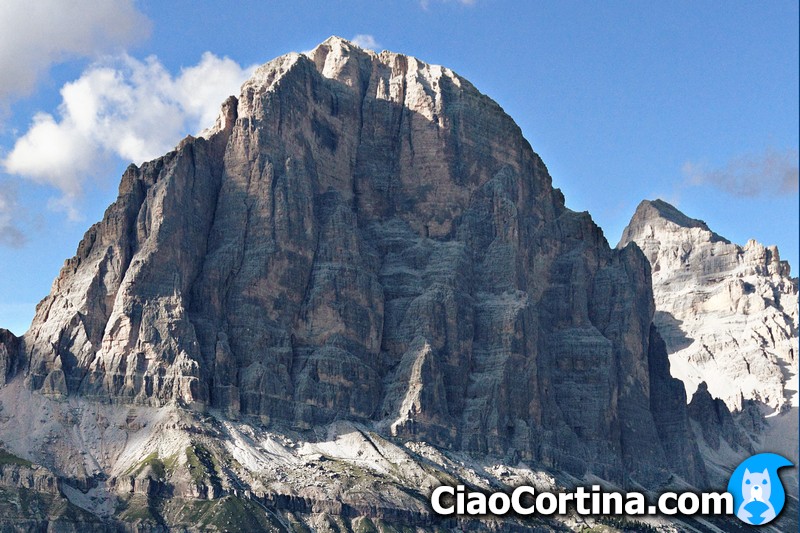
The shape is unique because the Dolomites are isolated mountain groups, characterized by large vertical walls that emerge from large grassy pastures, like huge cathedrals rising out of hills.
... you can walk through the stratifications, which are usually underground...
In addition, the Dolomites are very interesting geologically. They are the only area in the world with easy access to large-scale carbonate platforms, you can also walk with great ease through the different stratifications, which are usually underground.
So, what are these peculiarities due to? These questions are deeply answered by prof. Nereo in the two videos we talked about earlier, which we are going to summarize next.
 Help us stay ad-free with a small offer.Donate now!
Help us stay ad-free with a small offer.Donate now!
Geological history of the Dolomites
The birth of the Dolomites, as mentioned earlier, occurred along a geological period lasting millions of years. That era was characterized by a constant change in water levels, which led to the formation of different habitats, each one of them inhabited by different forms of life.
Our planet, at that time, was very different from the one we know today. There was only one great continent, called Pangea, constantly shaken by strong earthquakes and enormous volcanic eruptions.
... the territory was submerged by a large tropical sea...
The territory that actually is occupied by the Dolomites, at that time, were on a different latitude and longitude and was submerged by a large tropical sea, rich in life forms.
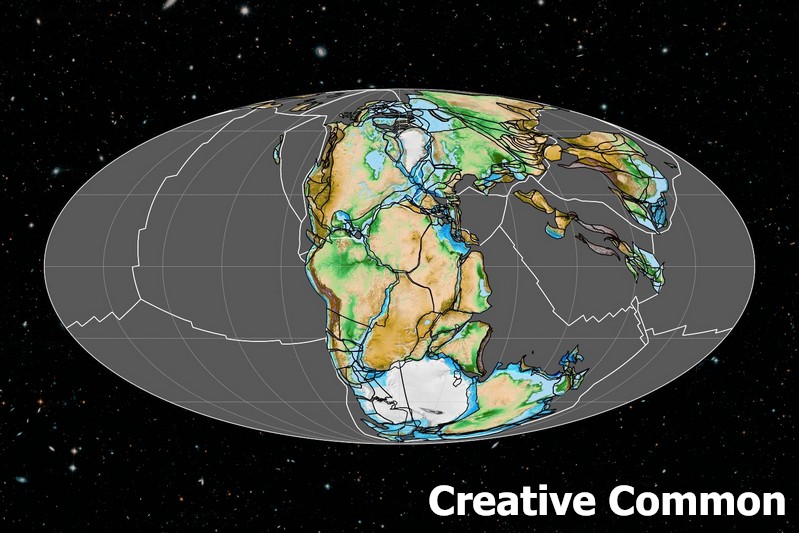
Following a period of strong eruptions, this sea was replaced by volcanic rocks, with a characteristic dark color, where large tropical forests grew.
... il mare portò alla formazione di vaste barriere coralline...
A million years later the sea rose again over the land, leading to the formation of vast coral reefs. Subsequently, the land emerged again, and the waters, now shallow, allowed the birth of fish of various species and large bivalves, then followed by the appearance of the first terrestrial reptiles.
Around that time some of the most known fossils in the Dolomites were formed. Those fossils can be seen in the Rinaldo Zardini Paleontological Museum in Cortina d'Ampezzo, which we discussed in the following article:

The presence of a tropical sea allowed the formation of organisms capable of producing calcium carbonate, such as corals, which produced it in the form of a skeleton anchored on the seafloor. When the first coral died, a second one arose on its skeleton, and so on.
In the long run this stratification of coral skeletons led to the formation of carbonate platforms, submarine mountains which pushed higher and higher, in search of the sunlight, essential for the life of these creatures.
... the landscape of the Dolomites at that time vaguely resembled that of today's Maldives...
In this way, the seafloor increasingly took the form of large flat expanses, composed of volcanic rock, on which stood oases of life that, stratifying, created vast rocky islands.
Just to give you an idea, the landscape of the Dolomites at that time vaguely resembled that of today's Maldives, but with shades of green instead of blue. The mountain peaks of today were the islands. The forests and pastures were completely submerged and formed the seabed.
In the large photographs below you can see two images taken from Google Earth, with the same altitude, showing the similarities between the Maldives and the Dolomites.
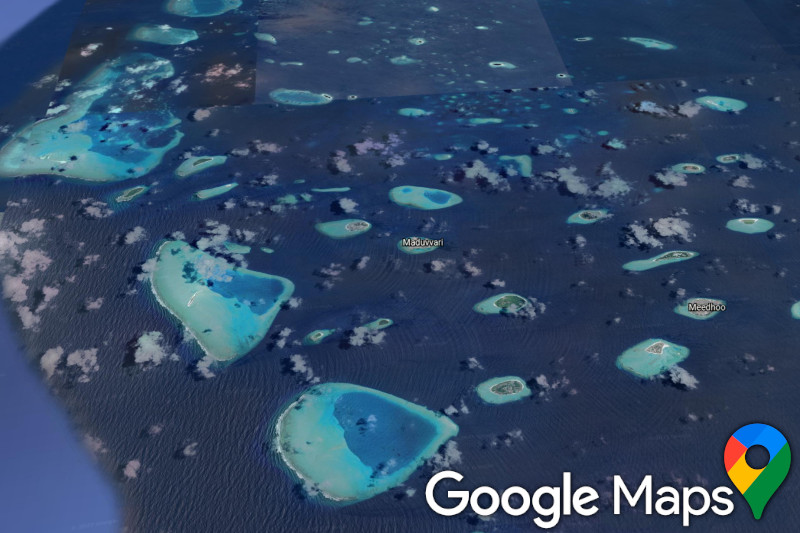
The transformation from seabed to mountains began about 80 million years ago, when the seismic movements caused by the collision between the African and European continents pushed the Dolomites upwards, bringing out these huge carbonate platforms of light color, which stood out on the seabed, of a darker color.
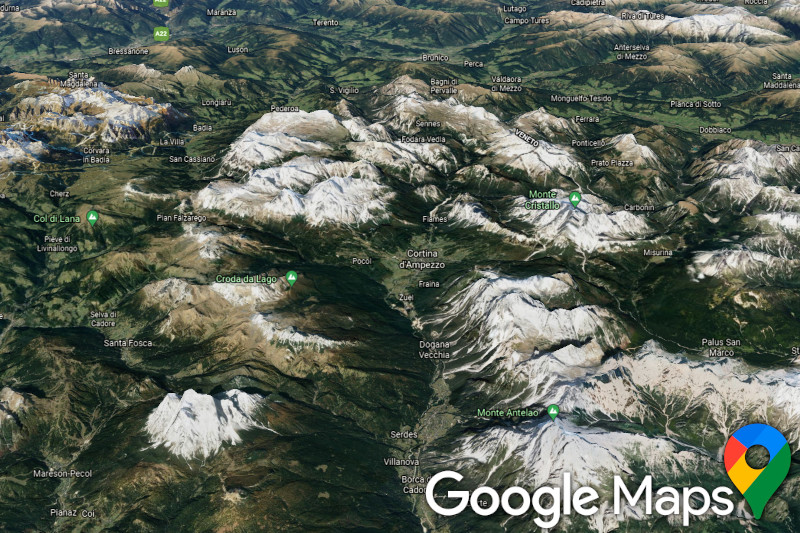
Over time nature took over the terrain, growing grass and trees along the ground previously occupied by the seafloor, while weathering shaped the dolomite rock, transforming a tropical seafloor into the beautiful landscape we know today.
 Help us stay ad-free with a small offer.Donate now!
Help us stay ad-free with a small offer.Donate now!
The Dolomite Problem
As we already mentioned before, the Dolomites have a light color, so much so that some call them the pale mountains. This is due to the fact that the rock that composes them, called Dolomia , is composed of Calcite (Calcium Carbonate) or Dolomite (double carbonate of calcium and magnesium), both very light in color.
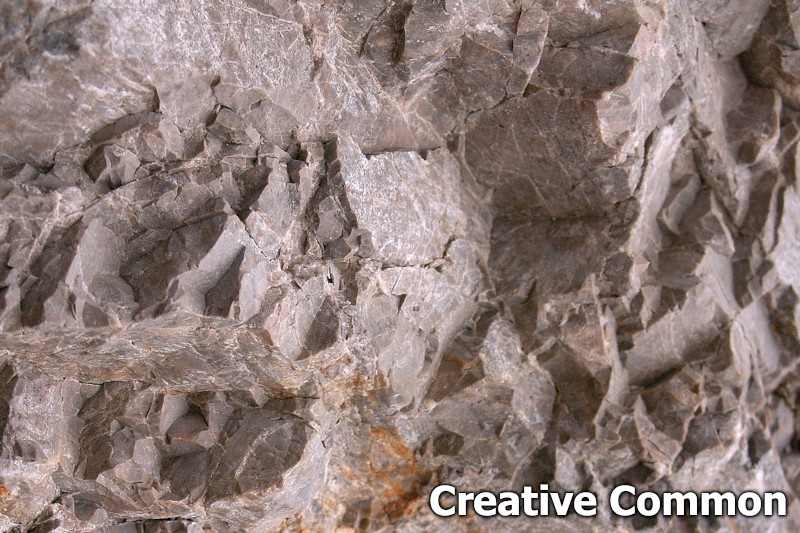
The peculiarity of the Dolomia was initially discovered by the French naturalist and geologist "Déodat de Dolomieu" (1750-1801), who first noticed the peculiar characteristics of this rock in the mountain groups of the Alps, later called the Dolomites in his memory. A memorial has been erected in his honor near the ice stadium in Cortina d'Ampezzo

Geologists of the time had deduced that this particular rock arose naturally in a coral-rich environment, but for centuries no geologist was able to recreate it, in the laboratory, at room temperature.
This paradox is known as "the Dolomite problem" and can be summarized as follows: in the past, dolomite has been produced in laboratories in huge quantities, but never at room temperature. Succeeding was crucial, in order to understand exactly how the Dolomites were formed.
The problem was partially solved in 1995, when a group of geologists went to the vicinity of the Sabkha of Abu Dhabi. There they observed dolomite forming naturally, and discovered that dolomitization occurs under special environmental conditions, with hyper salinization of the water and the presence of particular algae and bacteria, which seem to promote its development.
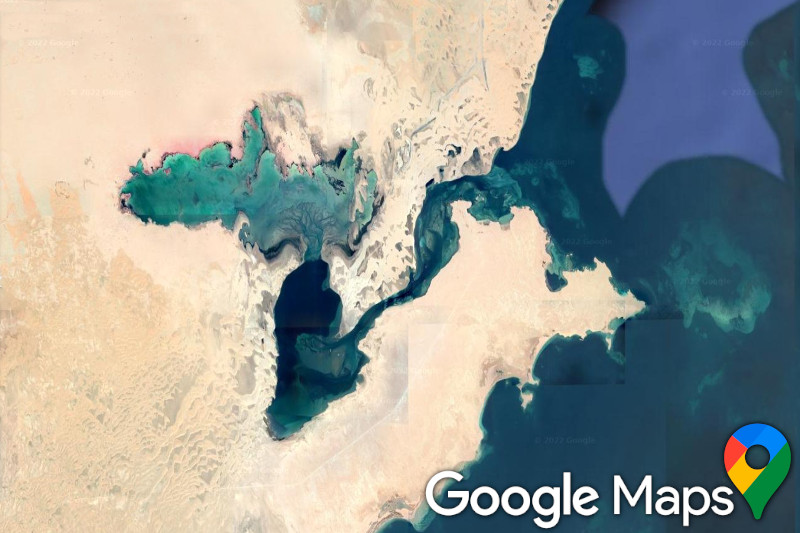
Only once these bacteria were used, in a hyper-saline solution, scientists were able to create dolomite at room temperature in the laboratory.
The Dolomites, then, are coral mountains?
Based on these studies it was discovered that the Dolomites were formed as a result of two distinct events. A first event is characterized by the presence of corals, with the formation of large carbonate platforms, and the second, somewhat less romantic, event, where the presence of algae and bacteria favored the formation of large quantities of light-colored rocks, which give the characteristic color to the mountains we know so well.
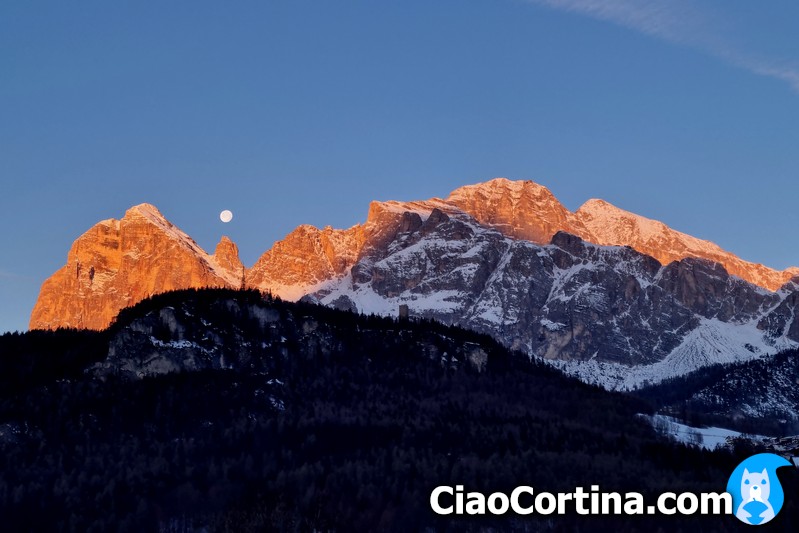
Long story short, leaving aside the poetry, but embracing what scientific research has shown, the Dolomites have, also, a bacterial origin. To conclude his talk, jokingly, Professor Nereo Preto defined the Dolomites as "The mountains of mucilaginous bacteria." Of course, he did this with a laugh, knowing that the bacteria contribution was as fundamental as that of corals. In any case, bacteria or corals, nothing can eclipse the magnificence of our mountains, a national pride that the whole world envies us.
All the processes described on this page were perfectly summarized, in English, in a video by the UNESCO Dolomites Foundation, which you can watch by clicking here.
 Help us stay ad-free with a small offer.Donate now!
Help us stay ad-free with a small offer.Donate now!
The enrosadira
Thanks to their particular geological characteristics, a phenomenon called enrosadira takes place in the Dolomites, which literally means "turning pink" and derives from the Ladin word enrosadöra. It is a very bright color of the peaks of the Dolomites during sunset or sunrise.
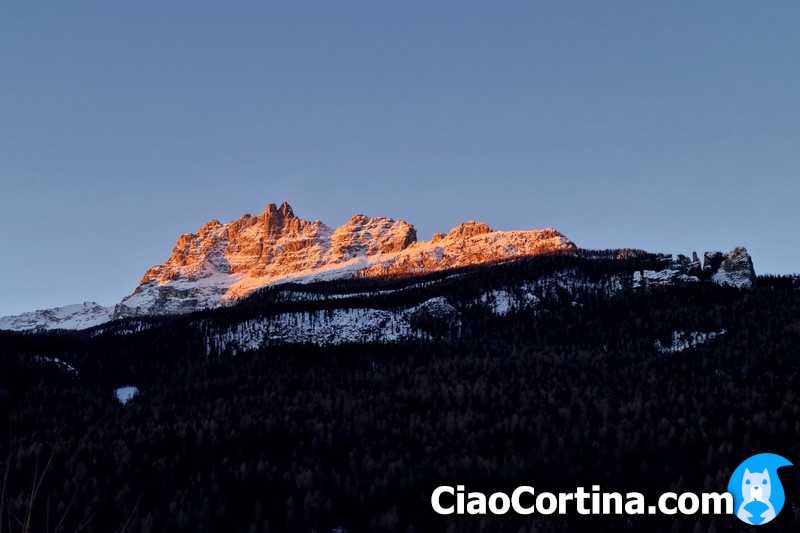
The coloring of mountains during sunrise and sunset occurs all over the world, but only here is it possible to witness the alternation of vivid hues such as orange, red and purple.
This phenomenon can only be seen on clear days and is possible due to the unique geological features we described earlier. Similar phenomenons are generally seen on limestone mountains, such as on the Gran Sasso of Italy or even on the carbonate plateaus of the Sardinian Supramonte.
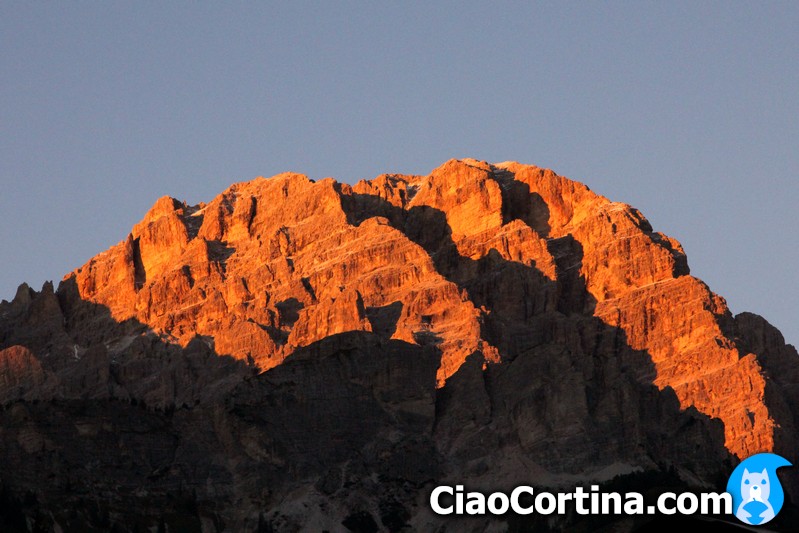
There is a legend about the origin of this phenomenon, which tells the story of Ladinia, daughter of King Laurino. She was kidnapped by the prince of Latemar after he saw her in the king's rose garden. The king, desperate for the loss, cursed his rose garden: neither by day nor by night any human eye could admire it again. However, King Laurino forgot the sunrise and sunset, where the rose garden and its colors can still be admired.
Conclusion
We hope you liked this page on the geological history of the Dolomites. Before saying goodbye, we would suggest you read our home page, with all the articles we wrote about Cortina d'Ampezzo.
If you want to thank us you can read the page Support us. If you only want to suggest a change, propose something or just say hello, in the section contacts and info you'll find all the ways to reach us.

